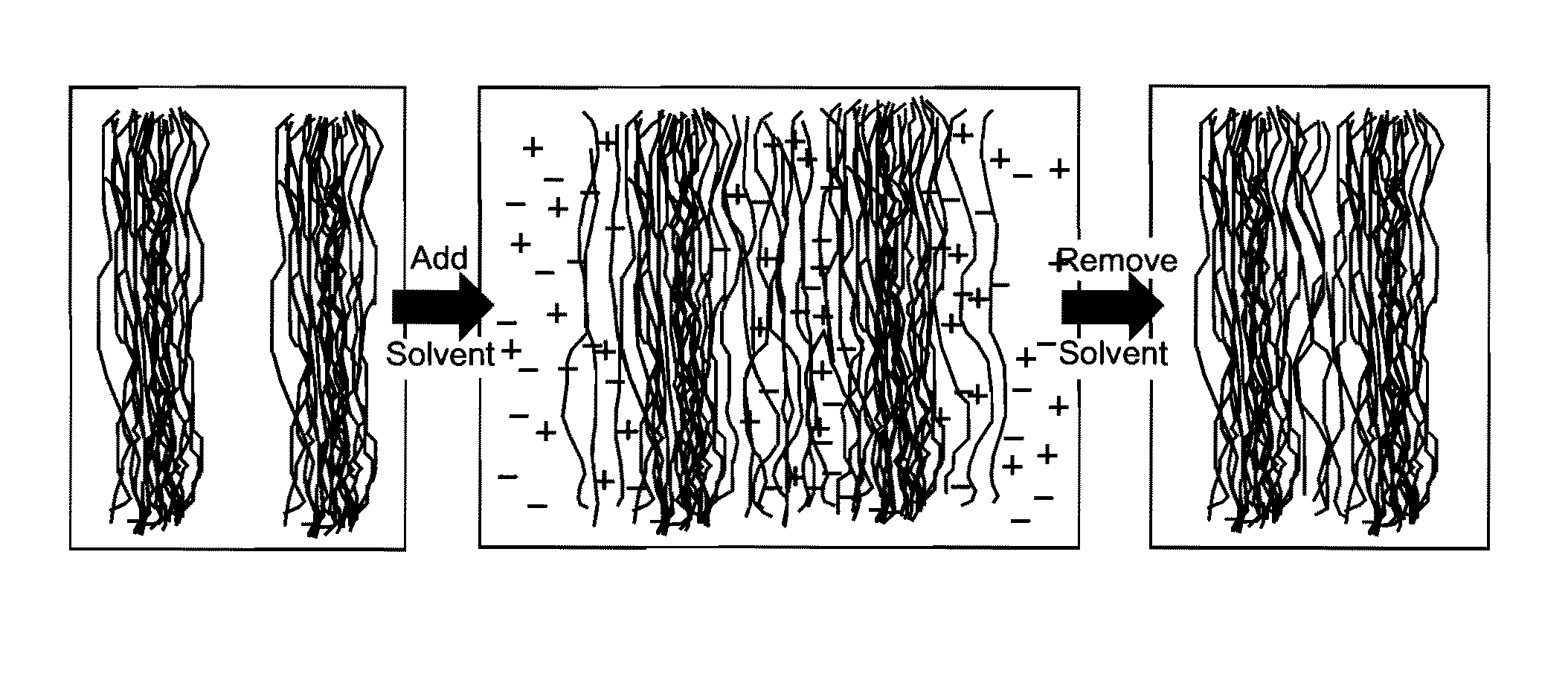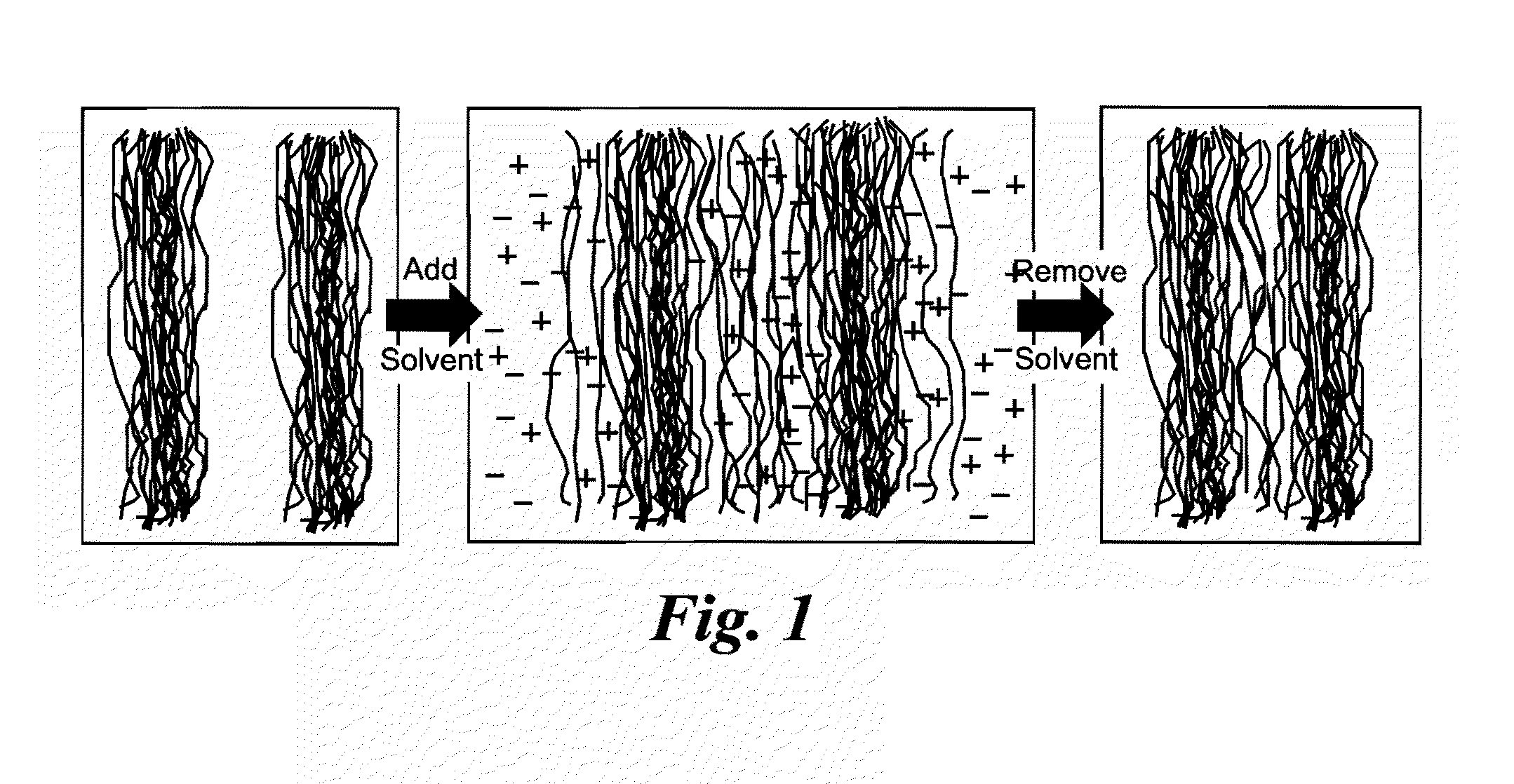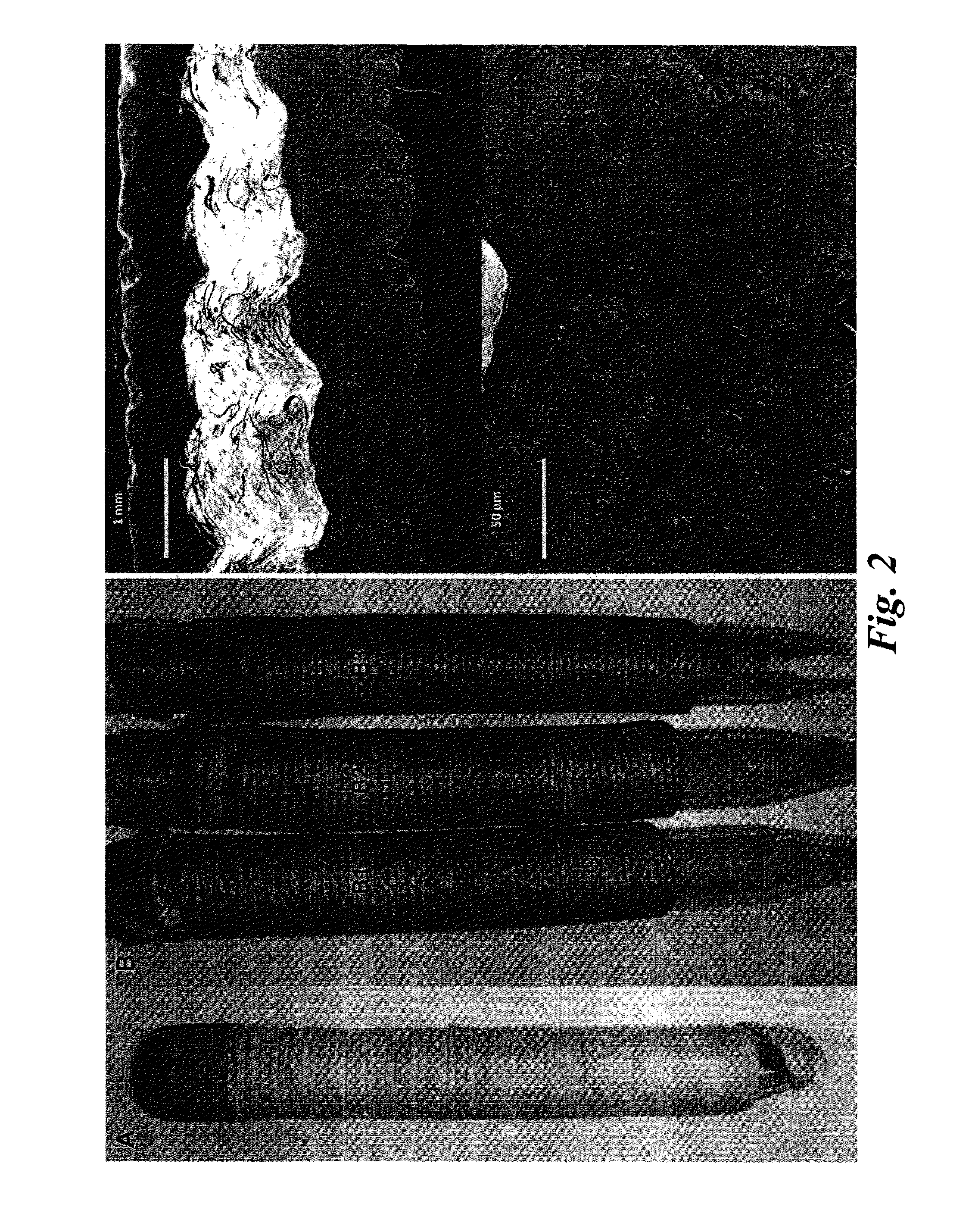Natural fiber welding
a technology of natural fibers and welding wires, applied in the field of partial dissolution of natural fibers, can solve the problems of reducing physical limit of how much polymer can be dissolved in solution, and traditional methods of cast molding biopolymer solutions, so as to reduce the surface area of bundles of fibers and increase the material density
- Summary
- Abstract
- Description
- Claims
- Application Information
AI Technical Summary
Benefits of technology
Problems solved by technology
Method used
Image
Examples
Embodiment Construction
[0020]Natural fiber welding is a processing technique by which natural fibers are swollen by an appropriate ionic liquid-based solvent system for the purpose of subsequent physical or chemical manipulation. The solvent system must be capable of interrupting intermolecular bonding (at least partially) to open and mobilize (solvate) the polymer for modification. Molecular additives such as water, methanol, et cetera are meticulously controlled to modify the solvent efficacy. Additionally, the amount of solvent (relative to polymer) is often intentionally kept low to limit the degree to which materials are modified. The ionic liquid-based solvent may be removed either by a second solvent system or by evaporation if the welding solvent is sufficiently volatile. (The evaporation rate may be increased significantly by placing the sample under vacuum.)
[0021]As used herein the term “ionic liquid” refers to a liquid that is comprised of anions and cations. Ionic liquids are attractive solven...
PUM
| Property | Measurement | Unit |
|---|---|---|
| Fraction | aaaaa | aaaaa |
| Fraction | aaaaa | aaaaa |
| Fraction | aaaaa | aaaaa |
Abstract
Description
Claims
Application Information
 Login to View More
Login to View More - R&D
- Intellectual Property
- Life Sciences
- Materials
- Tech Scout
- Unparalleled Data Quality
- Higher Quality Content
- 60% Fewer Hallucinations
Browse by: Latest US Patents, China's latest patents, Technical Efficacy Thesaurus, Application Domain, Technology Topic, Popular Technical Reports.
© 2025 PatSnap. All rights reserved.Legal|Privacy policy|Modern Slavery Act Transparency Statement|Sitemap|About US| Contact US: help@patsnap.com



